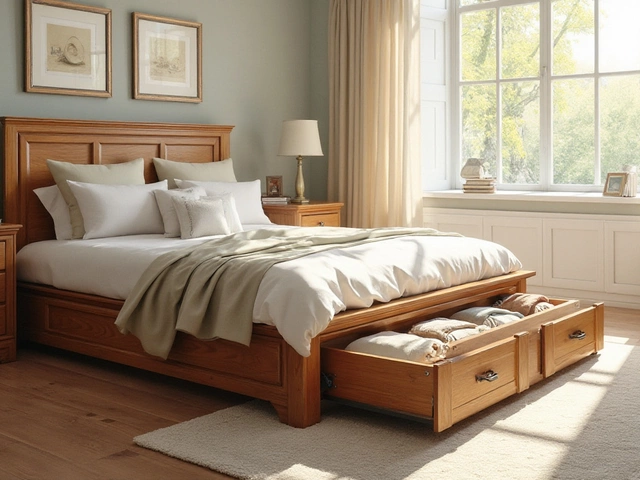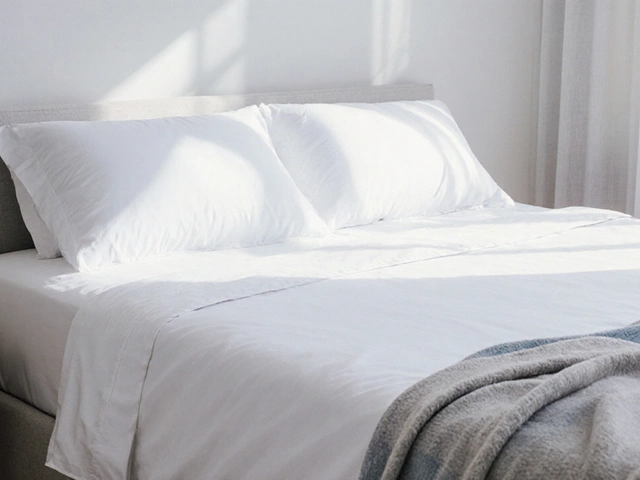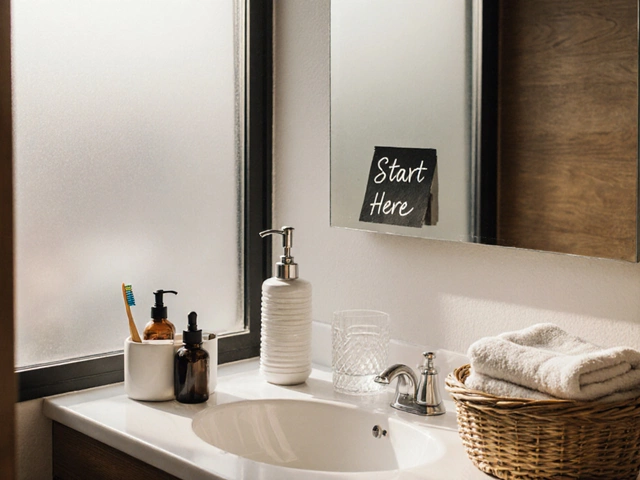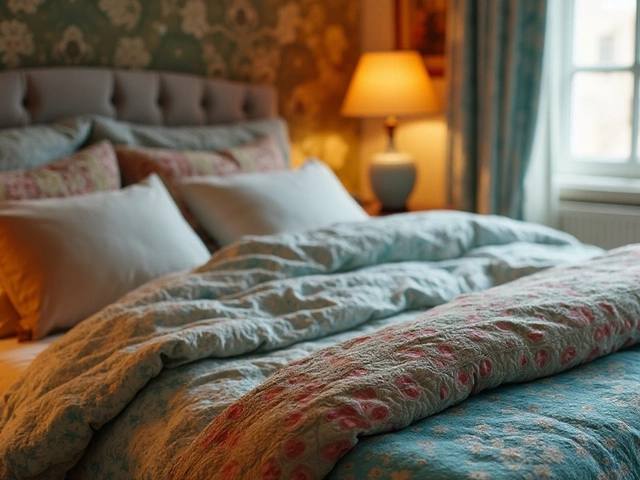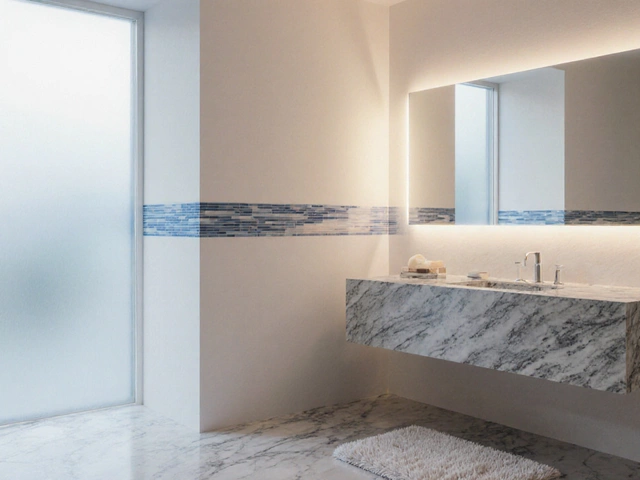Floating Shelves: Still Stylish or Outdated?
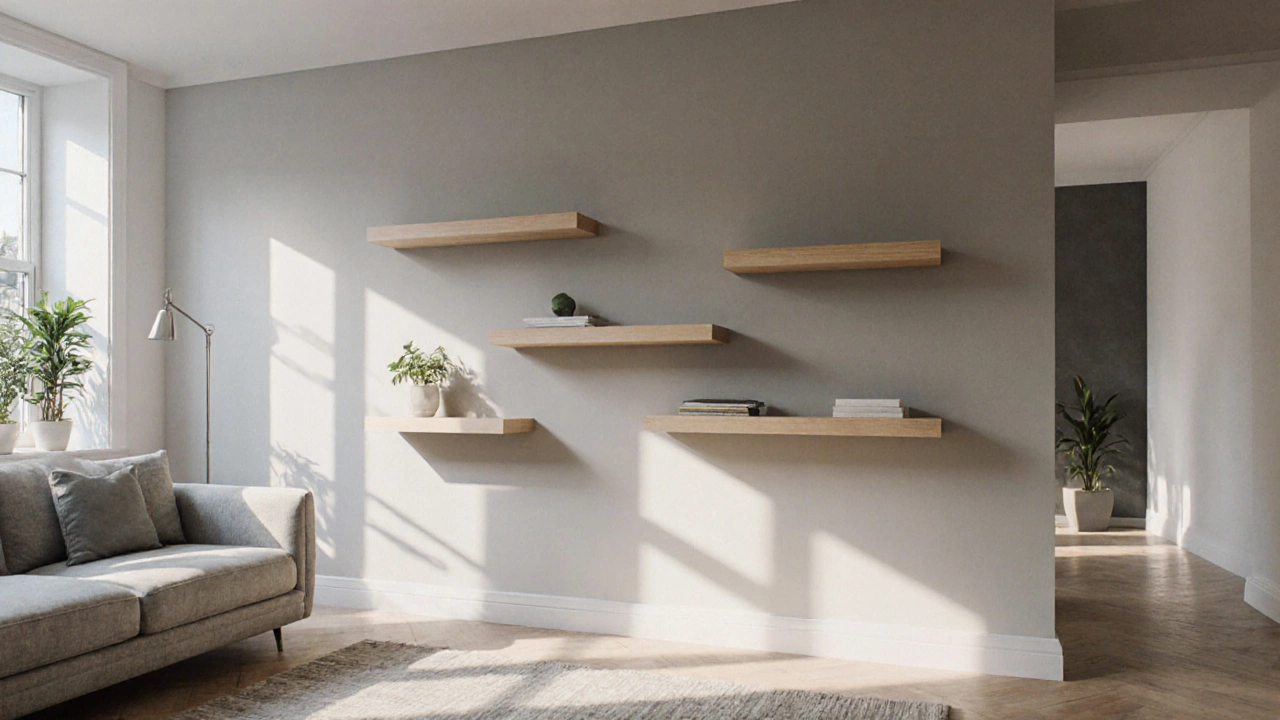
Floating Shelf Modernization Checker
Check Your Modernization Score
Determine if your floating shelves are stylish for 2025 by completing this quick checklist.
Your shelves need modernization. To make them current for 2025:
- Try a mix of materials like reclaimed wood and matte metal
- Install hidden LED lighting for a subtle glow
- Consider adding depth with layered shelves
- Use 18-24" spacing between shelves for breathing room
When you walk into a living room and see a row of sleek boards glued to the wall, the first thought is often: “Are floating shelves dated?” The question isn’t just about aesthetics; it’s about whether that minimalist look still fits into today’s ever‑shifting design language.
What exactly are floating shelves?
Floating shelves are wall‑mounted platforms that appear to hover without visible brackets. They rely on hidden hardware-usually sturdy metal brackets or a French cleat system-installed behind the board, giving the illusion of weightless storage. The concept is simple, but the execution can be anything from an inexpensive IKEA hack to a custom‑crafted piece that doubles as a piece of art.
From mid‑century to today: a quick timeline
- 1960s‑1970s: Mid‑century modern designers embraced floating forms to showcase clean lines and reduce visual clutter.
- 1990s‑2000s: Open‑concept homes and the rise of minimalism made floating shelves a budget‑friendly way to display books and decor.
- 2010‑2018: Influencers on Instagram popularised the “perfectly curated” look-geometric arrangements of candles, plants, and small sculptures.
- 2020‑2025: Biophilic design, mixed‑material interiors, and a push toward sustainability transformed the humble shelf into a platform for live plants, integrated lighting, and reclaimed wood.
Knowing the history helps you decide whether the style feels nostalgic or simply timeless.
2025 design trends that influence floating shelves
Even if a piece feels old, a fresh context can make it feel current. Here are three trends shaping wall storage right now.
- Organic minimalism: Soft, natural textures-think bamboo, reclaimed pine, and matte ceramic-pair with the sleekness of a floating shelf to create a warm, grounded vibe.
- Integrated LED lighting: Built‑in strips or discreet spotlights highlight the items on the shelf while adding a subtle glow that feels high‑tech.
- Mixed‑material pairings: Pair a walnut slab with a metal backplate, or mount a glass shelf alongside a sculptural wooden bracket that’s intentionally exposed for an industrial edge.
If you keep up with these, a floating shelf can transition from “retro” to “right‑on‑trend.”
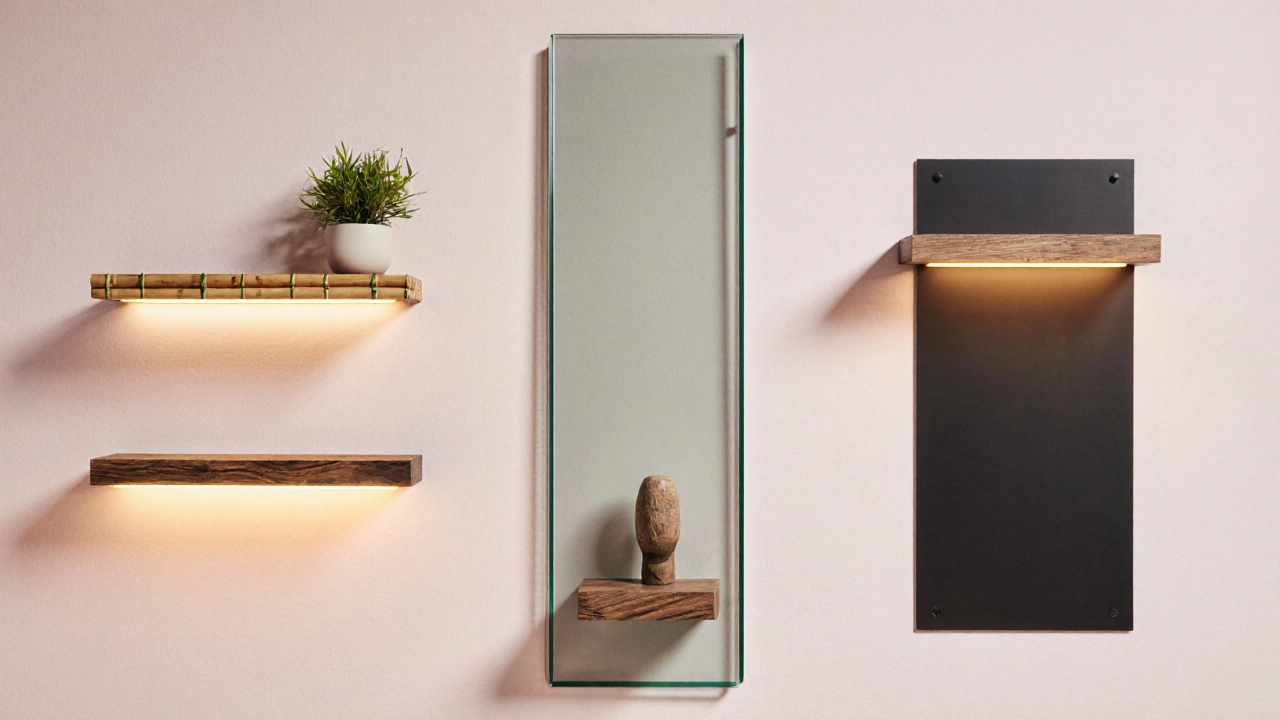
Pros of floating shelves in modern homes
- Space efficiency: No bulky brackets mean the wall stays clean and the floor stays open.
- Visual lightweightness: The “floating” illusion makes rooms feel larger-a big win in apartments.
- Easy re‑arrangement: Unlike built‑in shelving, you can relocate a floating unit with minimal effort.
- Showcase potential: The open design turns each shelf into a miniature gallery for books, plants, and art.
When floating shelves start to feel dated
Even the best‑designed piece can look out of place if you fall into a handful of common traps.
- Uniformity overload: Packing every wall with identical white boards creates a sterile, “showroom” feel that lacks personality.
- Heavy, dark wood on a small wall: Massive, dark slabs can dominate a room and make the space feel cramped.
- Cluttered styling: Overloading a shelf with unrelated objects becomes visual noise, eroding the clean aesthetic.
- Outdated hardware: Brackets or mounts that are visible, rusted, or overly industrial can clash with softer interiors.
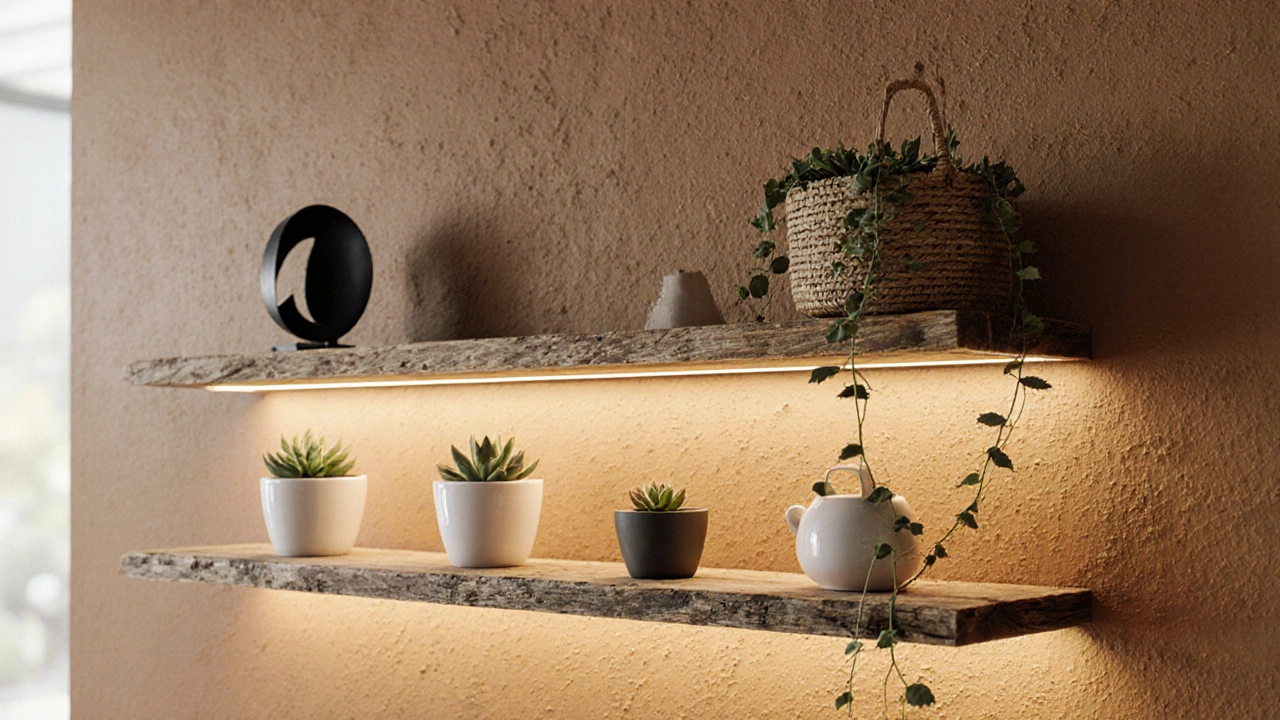
How to modernise floating shelves and keep them fresh
Here’s a step‑by‑step guide that takes a dated shelf and brings it up to speed.
- Swap the material: Trade a plain MDF board for reclaimed pine, matte black metal, or tempered glass. The change alone updates the visual language.
- Add hidden lighting: Install a low‑voltage LED strip on the back edge. A warm 2700K glow highlights décor without overpowering the room.
- Play with depth: Use a double‑layer setup-one shelf sits 2‑3 inches behind the other-to add shadow and intrigue.
- Introduce a theme: Group items by color, material, or scale. For example, a row of white ceramic planters followed by a single black sculpture creates a cohesive story.
- Mix in texture: Place a woven basket, a metal sculpture, or a stack of vintage books to break the flatness.
- Mind the height: Mount shelves at eye level for the most impact, but leave at least 18‑24 inches of breathing room between each to avoid visual congestion.
Floating shelves vs. other wall‑mounted options
| Feature | Floating Shelf | Bracket Shelf | Built‑In Niche |
|---|---|---|---|
| Visual Weight | Light, almost invisible | Visible hardware | Integrated, no protrusion |
| Installation Difficulty | Medium (requires studs or anchors) | Easy (simple brackets) | High (requires framing) |
| Cost Range (US$) | 50‑200 | 30‑120 | 200‑800+ |
| Flexibility | Highly portable | Moderate | Fixed |
| Best For | Modern, minimalist spaces | Traditional or industrial | Custom high‑end interiors |
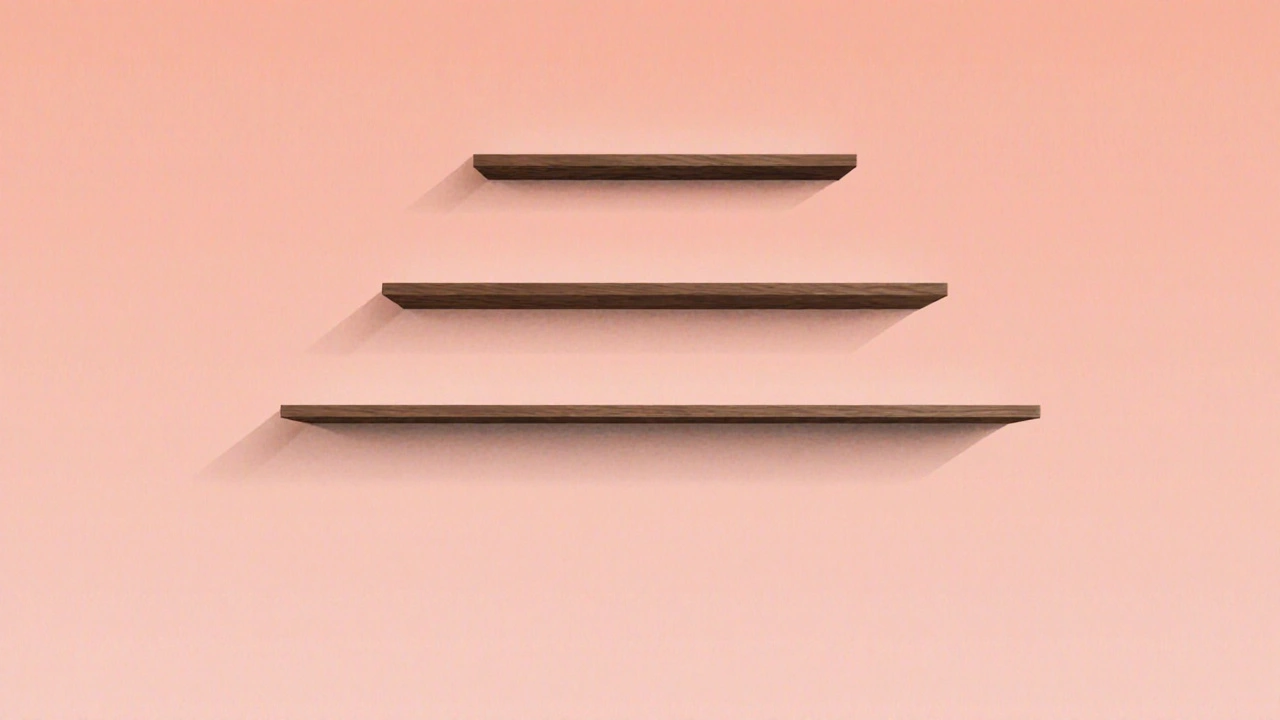
Quick modern‑shelf checklist
- Material: reclaimed wood, matte metal, or glass?
- Lighting: LED strip, concealed or exposed?
- Depth: single vs. double layer?
- Height: eye‑level + 18‑24″ spacing?
- Styling theme: color, texture, or size cohesion?
Run through these points before you buy or refinish, and you’ll avoid the most common dated‑shelf pitfalls.
Frequently Asked Questions
Can floating shelves hold heavy items?
Yes, if you anchor them to studs or use heavy‑duty wall anchors. A typical 2‑inch thick wooden shelf can safely hold 30‑40 lb per support, but always check the hardware’s load rating.
Is glass a good material for floating shelves?
Tempered glass offers a sleek look and works well in small spaces because it doesn’t add visual bulk. It’s best for decorative objects rather than heavy books.
How far apart should I space multiple floating shelves?
Aim for 18‑24 inches between shelves. This gap creates breathing room and keeps the display from feeling cramped.
Do floating shelves work in bathrooms?
Absolutely-choose moisture‑resistant materials like sealed bamboo or coated metal, and pair them with vent‑friendly lighting.
What’s the most budget‑friendly way to create a floating look?
Buy a plain board and a hidden bracket kit from a hardware store, then hide the brackets with paint‑matching filler. DIY installation can keep costs under $50.
Floating shelves aren’t a relic; they’re a canvas. By updating material, lighting, and styling, you can shift them from “dated” to “definitely on‑trend.” The next time someone asks, you’ll have a ready answer: they’re timeless, as long as you keep them current.

